Mighty Enlil Of The Sumerian Pantheon Of Gods
A. Sutherland - AncientPages.com - Ancient Sumer had a very complex pantheon of gods and goddesses, but four of these powerful figures played an important role because they were creators of everything.
Enlil (EN.LIL – his name meant "lord of the airspace" or “the air-god”) was the king of earth and heaven.
According to Sumerian beliefs, Enlil arrived on Earth well before the human race was created. He was Anu's eldest son; these two share the same epithets in different ancient texts, which describe Enlil -the second in the triad of Sumerian supreme gods – as "The Great Mountain" or "King of All the Lands" (lugal-kur-kur-ra) and “Father of the Gods.
Enlil's role in is based on Enlil’s power and authority is clearly emphasized in the Mesopotamian mythology; he creates and destroys and is the "decreer of fates".
He has the right to rule the world and to give kingship to kings and rulers, who turn to him to verify their claims to power. Enlil himself announces the king's name and awards him the scepter - a sign of his favor and acknowledgment.
He had placed gods on earth, arranged dwellings and cult places for them, which were not to be changed. Each god owned a special territory, which included a house, a temple to live in and priests to serve him. Enlil’s holy city of Nippur was called “built on its own”.
One example is mentioned in “The Lament for Urim” when Enlil is said to have "brought the storm of abundance away", to have "annihilated the land, silenced the city" (ETCSL 2.2.2).
As the "Lord of abundance", Enlil is a provider, but at the same time, this great authority could also take such plenty away from people and devastate the land.
Although Anu had authority over the pantheon of Sumer, Enlil was even more powerful as he embodied energy and force. He was also the god of agriculture, who separated earth and heaven to give the place for planet’s seeds to grow. He designed the plans to bring all trees, plants, and seeds to people on Earth.
 According to one myth, Enlil raped his consort Ninlil (Sud, in a Sumerian myth), the goddess of grain.
According to one myth, Enlil raped his consort Ninlil (Sud, in a Sumerian myth), the goddess of grain.
Despite the fact that Sumerian gods were powerful they were obliged to follow certain rules. Even the supreme god, Enlil, was once punished for his transgressions and exiled to the underworld.
Enlil’s cult center was at Nippur, the city located in central southern Mesopotamia and dedicated to him; his great sanctuary, the E.KUR ("house which is like a mountain") was also located at Nippur. In the divine area of Nippur, Enlil had his court, where he met with the gods for assembly.
As the “Lord of Destinies”, Enlil was the keeper of the “Tablet of Destiny”, which was stolen from him the evil bird-god Zu, who knew that the wearer of this tablet had the full control of the universe and fates of all.
In the Akkadian sources, Enlil’s nature is often described as malevolent and his “… command no god can set aside”. However, many disagree with this description of the mighty Enlil. Contrary to the common belief, Enlil was not a destructive deity who intended to harm to people. Instead, he was given the task to bring destruction and misfortune when it was required and decided by the Pantheon’s gods.
Many ziggurats devoted to Enlil existed in different locations such as Assur, Babylon, Dur-Kurigalzu and, probably, in Elam, outside of Mesopotamia.
Written by – A. Sutherland AncientPages.com Staff Writer
Copyright © AncientPages.com All rights reserved. This material may not be published, broadcast, rewritten or redistributed in whole or part without the express written permission of AncientPages.com
Expand for referencesReferences:
E. Wilshire, Insight into Two Biblical Passages
R.G. Kratz,H. Spieckermann, One God – One Cult – One Nation: Archaeological and Biblical Perspectives
More From Ancient Pages
-
 Rare Ancient Precious Artifacts Found In Rusovce, Slovakia
Artifacts | Sep 26, 2015
Rare Ancient Precious Artifacts Found In Rusovce, Slovakia
Artifacts | Sep 26, 2015 -
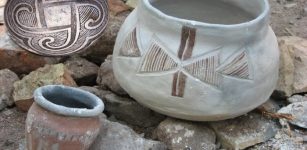 Fremont Indians: Unique 2,500-Year-Old Forgotten Culture Of North America
Artifacts | Jan 26, 2018
Fremont Indians: Unique 2,500-Year-Old Forgotten Culture Of North America
Artifacts | Jan 26, 2018 -
 Giant Meteorite Impacts Created The Continents – Evidence Found
Human Beginnings | Aug 12, 2022
Giant Meteorite Impacts Created The Continents – Evidence Found
Human Beginnings | Aug 12, 2022 -
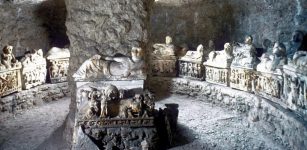 Image Of The Day: The Inghirami Tomb At Volterra, Italy
Image Of The Day | Sep 9, 2015
Image Of The Day: The Inghirami Tomb At Volterra, Italy
Image Of The Day | Sep 9, 2015 -
 Rene Descartes – Independent French Thinker And His Main Ideas
Featured Stories | Apr 27, 2021
Rene Descartes – Independent French Thinker And His Main Ideas
Featured Stories | Apr 27, 2021 -
 DNA Of 10,000-Year-Old Luzio Solves The Mysterious Disappearance Of The Sambaqui Builders
Archaeology | Jul 31, 2023
DNA Of 10,000-Year-Old Luzio Solves The Mysterious Disappearance Of The Sambaqui Builders
Archaeology | Jul 31, 2023 -
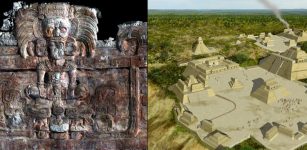 Spectacular Discovery Of Ancient Tombs Beneath Maya Pyramids Can Unravel The Mystery Of The Snake Kings
Archaeology | Oct 17, 2016
Spectacular Discovery Of Ancient Tombs Beneath Maya Pyramids Can Unravel The Mystery Of The Snake Kings
Archaeology | Oct 17, 2016 -
 Surprising Mask Of A Human Face Found On Cistern Wall In The Ancient City Of Ptolemais
Archaeology | Jan 17, 2025
Surprising Mask Of A Human Face Found On Cistern Wall In The Ancient City Of Ptolemais
Archaeology | Jan 17, 2025 -
 Sutton Hoo Burials May Belong To Anglo-Saxons Who Fought For The Byzantine Empire – Professor Suggests
Archaeology | Jan 10, 2025
Sutton Hoo Burials May Belong To Anglo-Saxons Who Fought For The Byzantine Empire – Professor Suggests
Archaeology | Jan 10, 2025 -
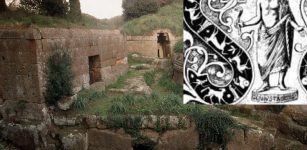 Tages: Etruscan Prophet Who Revealed Sacred Knowledge Before He Vanished
Featured Stories | Mar 1, 2016
Tages: Etruscan Prophet Who Revealed Sacred Knowledge Before He Vanished
Featured Stories | Mar 1, 2016 -
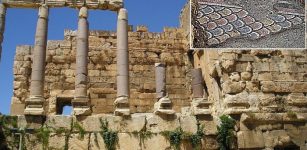 Roman Mosaic Dated To Between 60 BC And 300 AD Unearthed In Baalbek
Archaeology | Dec 30, 2020
Roman Mosaic Dated To Between 60 BC And 300 AD Unearthed In Baalbek
Archaeology | Dec 30, 2020 -
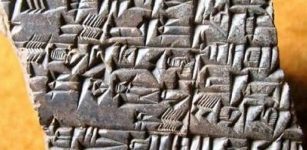 Sumerian Clay Brick With Inscription In Honor Of God Enki Returns To Iraq
Archaeology | May 5, 2015
Sumerian Clay Brick With Inscription In Honor Of God Enki Returns To Iraq
Archaeology | May 5, 2015 -
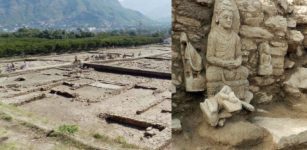 Bazira – Lost City Of Alexander The Great Discovered In Pakistan
Archaeology | May 7, 2019
Bazira – Lost City Of Alexander The Great Discovered In Pakistan
Archaeology | May 7, 2019 -
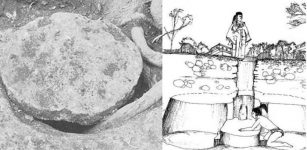 Mysterious Chultuns – Ancient Underground Chambers Built By The Maya – But For What Purpose?
Featured Stories | Jun 24, 2017
Mysterious Chultuns – Ancient Underground Chambers Built By The Maya – But For What Purpose?
Featured Stories | Jun 24, 2017 -
 Mysterious Pre-Celtic Civilization Who Came To Ireland From An Unknown Land
Featured Stories | Aug 13, 2024
Mysterious Pre-Celtic Civilization Who Came To Ireland From An Unknown Land
Featured Stories | Aug 13, 2024 -
 Albert Pike’s Masonic Prophecy About The Three World Wars
Featured Stories | Jan 15, 2018
Albert Pike’s Masonic Prophecy About The Three World Wars
Featured Stories | Jan 15, 2018 -
 Fomorians: Supernatural Race Of Giants Who Came From Atlantis
Celtic Mythology | Jul 18, 2017
Fomorians: Supernatural Race Of Giants Who Came From Atlantis
Celtic Mythology | Jul 18, 2017 -
 Mysterious Stone Age Cemetery Found Near The Arctic – Why Are The Graves Empty?
Archaeology | Dec 4, 2023
Mysterious Stone Age Cemetery Found Near The Arctic – Why Are The Graves Empty?
Archaeology | Dec 4, 2023 -
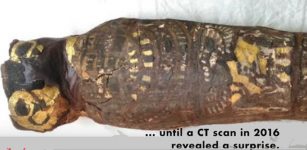 Micro-CT Scans Revealed: It Wasn’t Egyptians’ Falcon-Headed Deity But Malformed Human Baby
Archaeology | Jun 2, 2018
Micro-CT Scans Revealed: It Wasn’t Egyptians’ Falcon-Headed Deity But Malformed Human Baby
Archaeology | Jun 2, 2018 -
 On This Day In History: George Bernard Shaw Died – On Nov 2, 1950
News | Nov 2, 2016
On This Day In History: George Bernard Shaw Died – On Nov 2, 1950
News | Nov 2, 2016


